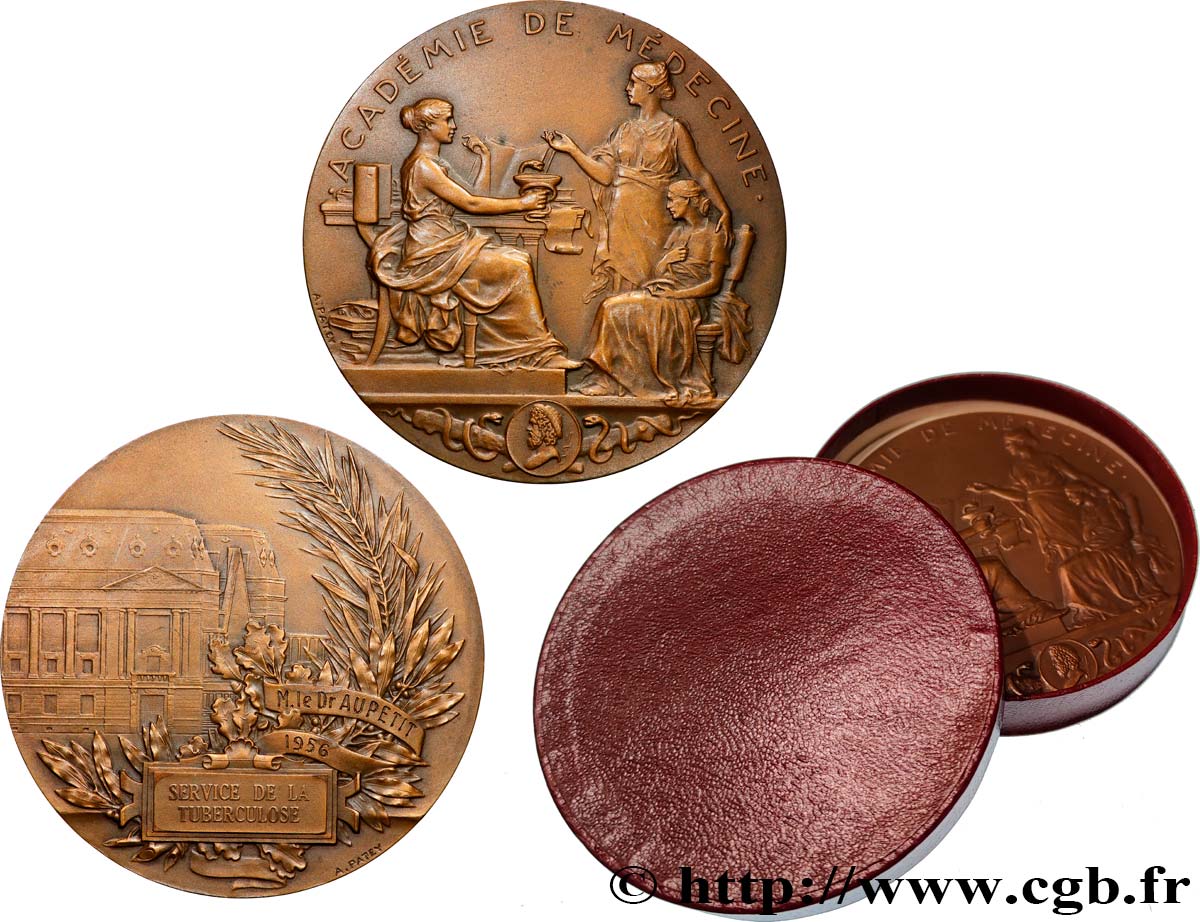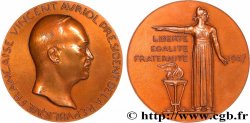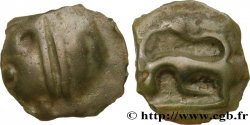fme_930154 - IV REPUBLIC Médaille, Académie de médecine, Service de la Tuberculose
70.00 €(Approx. 80.50$ | 60.20£)
Quantity
Add to your cart

Type : Médaille, Académie de médecine, Service de la Tuberculose
Date: 1956
Mint name / Town : 75 - Paris
Metal : bronze
Diameter : 59 mm
Orientation dies : 12 h.
Engraver PATEY Henri-Auguste-Jules (1855-1930)
Weight : 92,15 g.
Edge : lisse + Corne BRONZE
Puncheon : corne BRONZE
Coments on the condition:
Patine hétérogène. Quelques points d’usure
Obverse
Obverse legend : ACADÉMIE DE MÉDECINE.
Obverse description : Trois femmes autour d’une table ; à l’exergue portrait d’Esculape dans un médaillon posé sur un tronc avec deux serpents enroulés. Signé : A. PATEY.
Reverse
Reverse legend : SERVICE DE LA / TUBERCULOSE // M. LE DR AUPETIT / 1956.
Reverse description : Vue architecturale de l’Académie avec un cartouche pisé sur une gerbe végétale retenue par un ruban inscrit.
Commentary
Médaille, conservée dans une boîte cartonnée bordeaux, décernée au docteur Aupetit.
Dans la mythologie grecque, Asclépios (en latin Aesculapius) est dans l'épopée homérique un héros thessalien puis, à l'époque classique, le dieu gréco-romain de la médecine. Fils d'Apollon, il meurt foudroyé par Zeus pour avoir ressuscité les morts, avant d'être placé dans le ciel sous la forme de la constellation du Serpentaire.
Il correspond à l'Esculape romain, dont le nom est une traduction en alphabet latin du dieu grec, et à l'Imhotep égyptien. Son attribut principal est le bâton d'Asclépios, autour duquel s'enroule un serpent, aujourd'hui symbole de la médecine.
Son principal lieu de culte est situé à Épidaure, où il guérit les pèlerins par incubation. Il est invoqué dans le serment d'Hippocrate aux côtés de son père Apollon et de ses filles principales Hygie et Panacée. Il est l'ancêtre mythique des Asclépiades, une dynastie de médecins exerçant à Cos et Cnide, dont Hippocrate est le plus illustre membre..
Dans la mythologie grecque, Asclépios (en latin Aesculapius) est dans l'épopée homérique un héros thessalien puis, à l'époque classique, le dieu gréco-romain de la médecine. Fils d'Apollon, il meurt foudroyé par Zeus pour avoir ressuscité les morts, avant d'être placé dans le ciel sous la forme de la constellation du Serpentaire.
Il correspond à l'Esculape romain, dont le nom est une traduction en alphabet latin du dieu grec, et à l'Imhotep égyptien. Son attribut principal est le bâton d'Asclépios, autour duquel s'enroule un serpent, aujourd'hui symbole de la médecine.
Son principal lieu de culte est situé à Épidaure, où il guérit les pèlerins par incubation. Il est invoqué dans le serment d'Hippocrate aux côtés de son père Apollon et de ses filles principales Hygie et Panacée. Il est l'ancêtre mythique des Asclépiades, une dynastie de médecins exerçant à Cos et Cnide, dont Hippocrate est le plus illustre membre..








 Report a mistake
Report a mistake Print the page
Print the page Share my selection
Share my selection Ask a question
Ask a question Consign / sell
Consign / sell
 Full data
Full data










